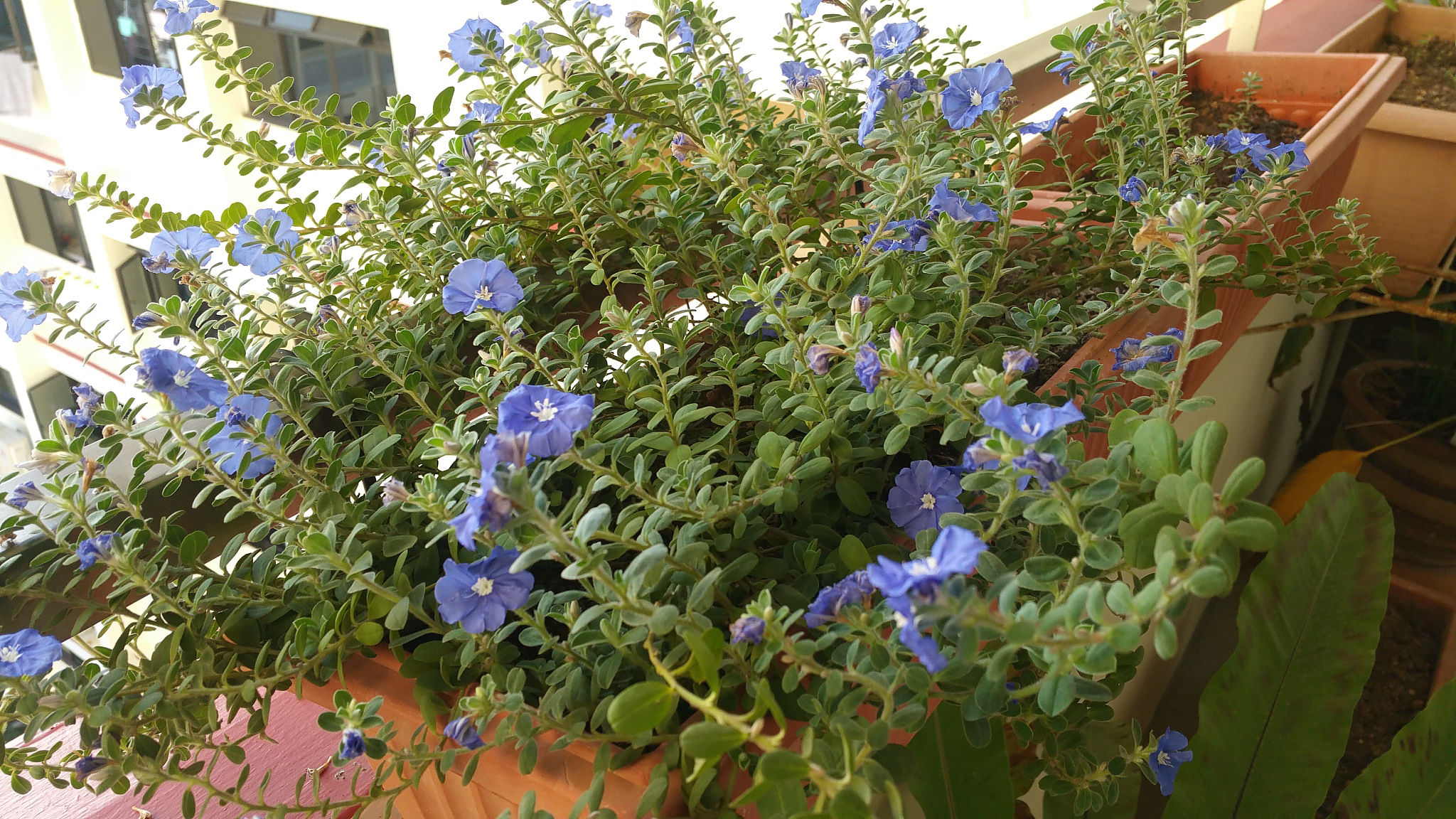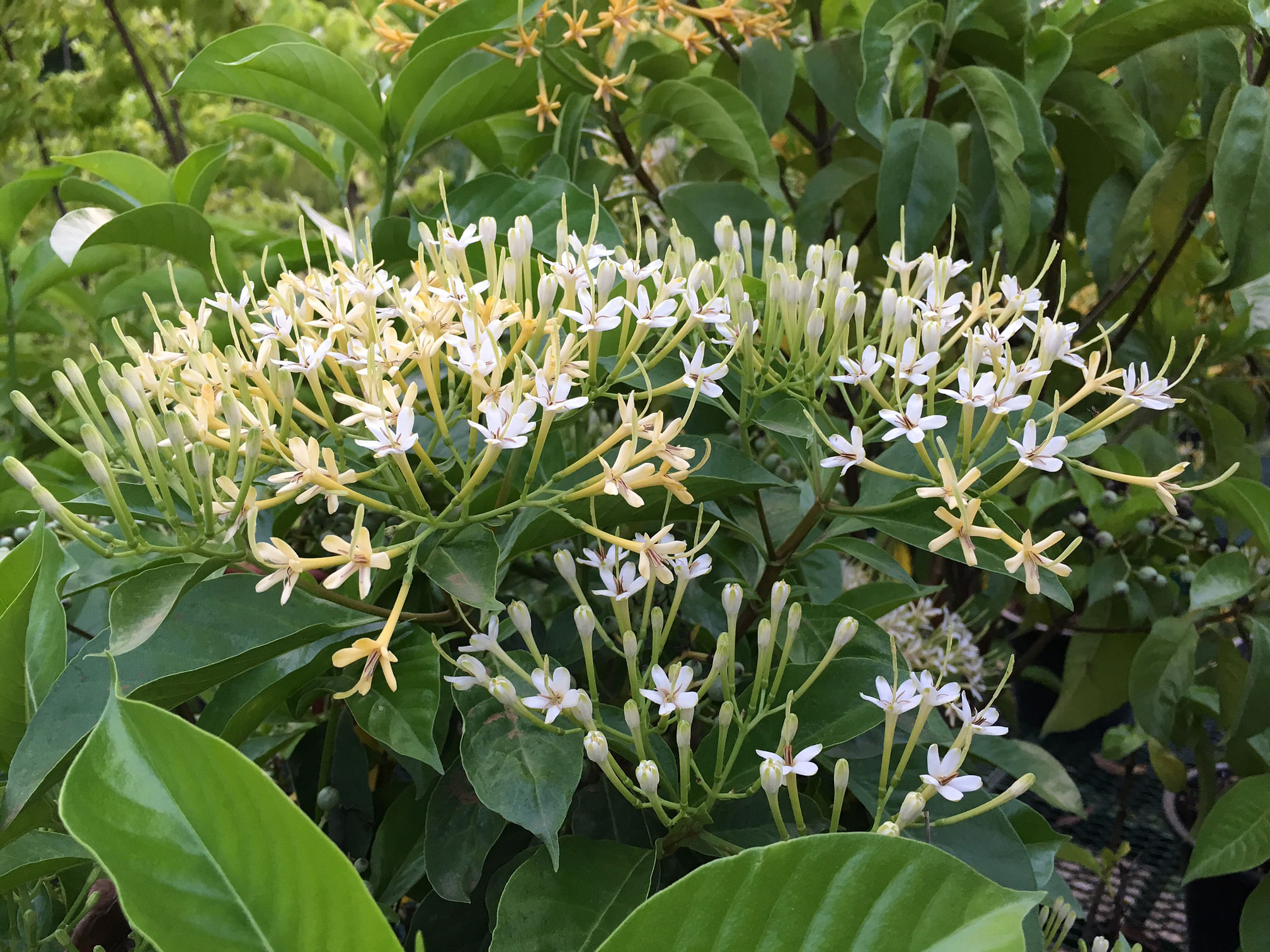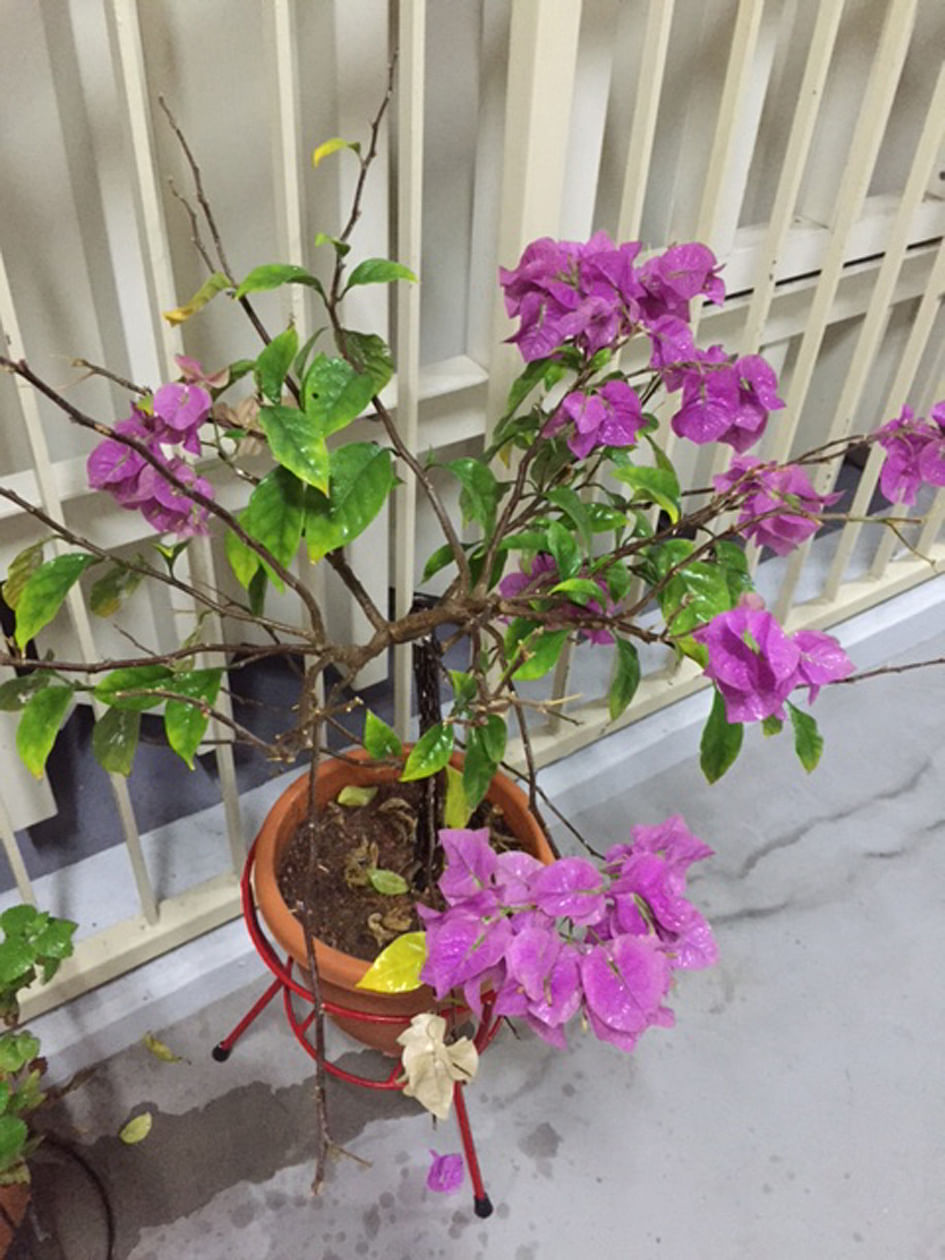Blue daze needs direct sunlight to thrive
I have had this plant (below) for a long time. What is it?
Paulyn Goi
The shrub is commonly known as blue daze or dwarf morning glory. Its botanical name is Evolvulus glomeratus. A member of the morning glory family (Convolvulaceae), it needs direct sunlight and well-draining soil to grow well. It is prone to disease when grown in soil that is overly wet or compact.


Tip: Tarenna fragrans a good choice for scented gardens
Tarenna fragrans is a plant that is native to Singapore and the region. A member of the ixora family (Rubiaceae), it produces numerous bunches of flowers that are very fragrant. The colour of the flowers changes as they age, which is another interesting feature of this plant.
It can be grown as a shrub or allowed to grow into a small tree. It prefers moist, well-draining soils and to be exposed to direct sun. You may consider growing it as part of a scented or native plant garden.

Changing growing conditions can lead to shedding of leaves
The leaves and flowers of my bougainvillea have fallen off (above) and the plant is balding. How do I revive it? I have not added fertiliser or dug the soil.
Tan Joo May
Many reasons can explain the loss of leavesin this plant, which requires full sun to grow well.
A change from a sunny area - such as from the nursery where you bought the plant - to your corridor, which is overly shady, can lead to shock and would cause the plant to lose its leaves.
Always check the moisture content of the soil before watering each time.
If you are not sure how wet the soil is, insert a wooden chopstick into the soil to ascertain the moisture level. If the chopstick comes out wet, do not water. Excessive moisture in the root zone can cause the roots to suffocate and die.
Conversely, although the bougainvillea is a drought-tolerant plant, it should not be allowed to dry out totally. If the soil is overly compacted, water may not be able to reach the roots. As a result, the plant dries out and loses its leaves.
Water sufficiently to ensure the plant does not dry out excessively and incorporate organic matter into the root zone to reduce soil compaction.

Leaves and flowers of red hibiscus edible
Can I eat the leaves and flowers of the red hibiscus plant (above)? My plant has grown so tall in a big pot that the stem has started to bend. Can I prune the stem and propagate it?
Teh Soo Inn
The red hibiscus (its botanical name is Hibiscus acetosella) is a close relative of the roselle. Its flowers - mainly the petals - and leaves are edible and small amounts can be added to salads. They have a tart taste.
The long, floppy stems can be cut into shorter sections and rooted in pots to grow new plants. Pruning the plant is a good way to keep it bushy and tidy as well as to rejuvenate larger, tired-looking plants.
Biological insecticide to treat caterpillars
I have been growing the Cycas revoluta plant for many years and always have problems with Cycad butterflies. I use insecticide every day. However, the chemicals from the spray have an adverse effect on the leaves. What can I do to get rid of the butterflies?
Chong Toh Kuan
One way to protect the young fronds of the sago palm, or Cycas revoluta, from being eaten by the caterpillars of the Cycad Blue Butterfly is to use Dipel.
It is a highly specific, biological insecticide based on the bacterium Bacillus thuringiensis subsp. kurstaki. You must apply this pesticide whenever you see new fronds emerging on your plant. It is a contact insecticide that works for a week or so.
Reapply weekly (or follow the label instructions) and after heavy rain, which will wash the pesticide away.
•Answers by Dr Wilson Wong, a certified practising horticulturist and founder of Green Culture Singapore (www.greenculturesg.com). He is also an NParks-certified park manager.
•Have a gardening query? E-mail it with clear, high-resolution pictures of at least 1MB, if any, and your full name to stlife@sph.com.sg
